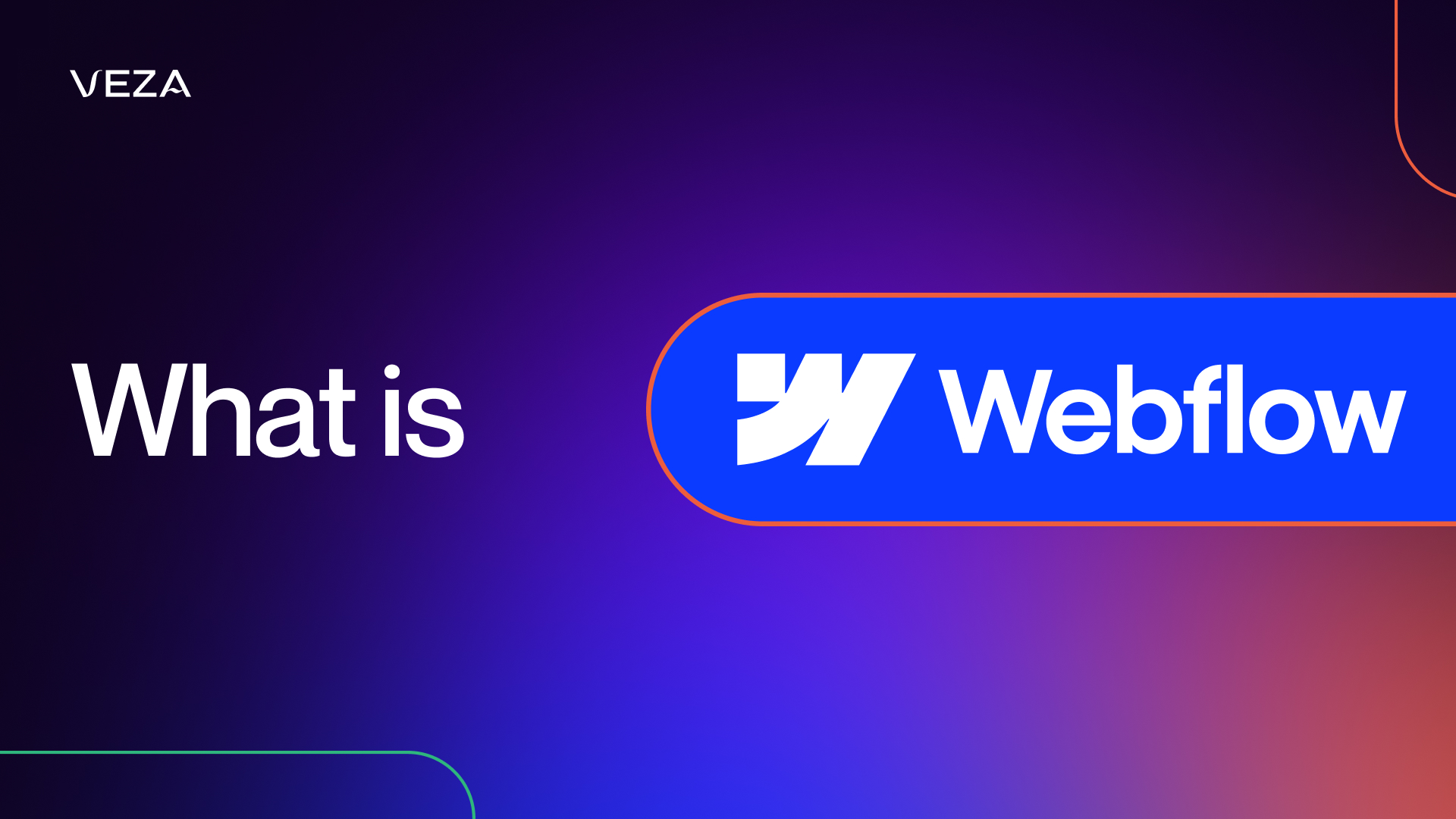Webflow is a powerful, yet easy-to-use website builder that lets marketers create unique and modern websites without the hassle of traditional coding.
Webflow's visual editor allows for complete control over every element of a website, from layout and design to animations and interactions.
With its built-in components and integrations, and even custom code that skilled developers can inject for more complex projects, Webflow has it all.
From the insights of our own Webflow experts, you get a feel for what Webflow is and how a Webflow site can help marketers build a marketing website.
What Makes Webflow Different?
Webflow is a sensation. It is a popular cloud-based website builder that allows designers and developers to create custom websites without writing extensive code. It's a visual platform where a person can drag and drop elements, adjust styles, and build intricate layouts.
Webflow Cloud has brought the new generation of Webflow.
This feature has expanded its capabilities beyond traditional website hosting. Powered by Cloudflare's global edge network, Webflow Cloud offers very fast and, I mean, lightning-fast load times and powerful developer features, all within Webflow's visual-first build approach.
Key Features & Advancements of Webflow Cloud
Full-Stack Web App Deployment
- Capability - full-stack web applications using modern frameworks like Next.js and Astro.
- Integration - Your app logic, content, and design system can all be on the same platform.
- Efficiency - No need for separate hosting setups or fragmented workflows.
- Impact - A significant advancement for building dynamic, logic-based web experiences with your visual front-end.
Enhanced Hosting Infrastructure
- Technology - Leverages a powerful native hosting infrastructure, usually powered by Amazon Web Services (AWS) and Fastly's CDN.
- Reliability - Provides high reliability.
- Speed - Offers enterprise-grade speed.
- Delivery - Global content delivery.
- Benefit - Guarantees faster load times for visitors globally
Advanced Capabilities for Marketers
- Webflow Analyze - Offers real-time, actionable insights into site performance, allowing marketers to track visitor behavior, identify high-performing content, and make data-driven decisions directly within the Webflow dashboard.
- Webflow Optimize - Enables A/B testing and personalization directly on the website without third-party tools, allowing marketers to test content variations, layouts, and CTAs to maximize conversions.
- Enhanced SEO Tools - Built-in SEO features to easily manage meta tags, structured data, and sitemap generation to improve search engine visibility.
- Scalable Content Management - The Webflow CMS and the new CMS APIs allow for programmatic content delivery and the generation of thousands of dynamic pages for advanced SEO strategies.
- Improved Collaboration - Webflow consistently improves its collaboration features, letting marketing teams work together simultaneously, which includes optimizing processes and ensuring consistent brand messaging across all projects.
Webflow Designer
Webflow Designer is the design core of a website's visual structure, interactions, and functionality. It's a powerful visual development tool that lets designers and developers build custom, responsive websites with precise control.
Visual-First Development - The Designer operates as an advanced, browser-based interface. Designers build custom websites visually by dragging and dropping elements, adjusting styles, and creating intricate layouts directly on a "canvas" area.
Automatic Code Generation - As you design, Webflow automatically generates clean, semantic, and production-ready HTML, CSS, and JavaScript.
Complete Creative Control - Unlike template-heavy builders, Webflow Designer offers full control over every aspect of a site's design and structure. This means access to all styling options, element management, and structural control, allowing for truly custom designs.
Responsive Design Made Easy - Building websites that look fantastic on any device (desktop, tablet, mobile) is intuitive. The Designer provides responsive breakpoints and media queries, allowing you to preview and adjust layouts for various screen sizes visually.
Advanced Interactions and Animations - The Designer allows users to create scroll-based effects and multi-step animations without needing to write JavaScript. Users can also integrate with tools like Lottie and Rive.
CMS Integration- While the Editor is for populating CMS content, the Designer is where you define and build your CMS Collections, set up custom fields, and establish relationships between different content types.
Semantic HTML & CSS - Webflow's visual interface maps directly to CSS and HTML controls. This means having clean, well-structured code that enhances website performance and SEO.
Custom Code Flexibility - Webflow supports injecting custom code, integrating with third-party tools, and connecting via APIs. This gives users the best of both no-code and traditional development.
In short, Webflow uses a visual interface to build custom, responsive websites with automatically generated, clean code, giving users complete creative control and advanced functionality.
Webflow Editor
.webp)
If you are a marketer or manage a team without major technical skills, the Webflow Editor is going to make you and your team feel very techy. The system is designed for effortless content management.
The Editor is really the most user-friendly way for non-technical members of a team to update site content. The team can view all the site's pages, create new CMS (Content Management System) pages, and update SEO metadata.
Webflow CMS
Webflow CMS (Content Management System) is a straightforward, non-technical way to organize, change, update, and update all the content on a website.
The key distinction is that within the Designer, you can actually build and structure new CMS collections (the data infrastructure), while the Editor allows you to populate and use what's already been set up.
Every CMS Collection is built upon two core components that make Webflow so powerful.
- Data Fields - Like a customized form that you fill out when creating a new content item like a new blog post.
- Page Visual Design - This is the consistent layout that will display the data from your form fields once published.
Webflow has the rare ability to connect to other CMS tools like HubSpot through integrations, making it even more flexible.
CMS Collection Templates
CMS Collection Template is a dynamic design blueprint, users design the layout for a single blog post page, determining where the heading will appear, the size of images, and the font style for the body text. This design you've created is
With Webflow, marketers can create unique, engaging content that directly addresses their audience's search intent.
This makes it easy to experiment with different content formats and analyze performance.
This flexibility adapts to a content strategy to meet the evolving needs of the target audience
and frequent Google updates that content must bend to.
Figma to Webflow Plugin
.webp)
Take your designs from Figma straight to development with the powerful Figma to Webflow plugin. This innovative tool eliminates the need for manual code conversion. While there are some limitations and best practices to follow for optimal results, the plugin has significant time savings and an efficient design-to-development workflow. This cuts time for front and back-end collaboration.
Webflow Integrations Overview
What does Webflow integrate with? Let’s check the chart below!


